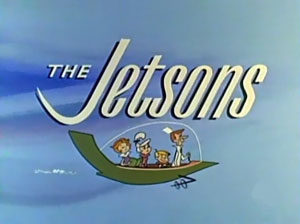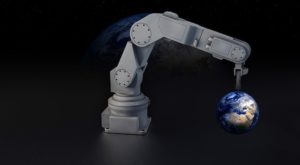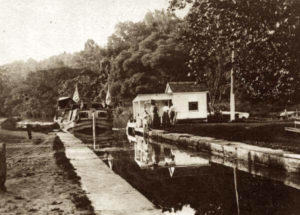Going Driverless
Or: If You Don’t Like My Driving, Press One Now
In my last entry, I wrote about labor-saving technologies and their effects on our job markets. Automation tends always to cost jobs, but for the most part they also tend to produce new jobs.
We've reached a tipping point, however. As labor-saving technologies get more and more efficient, the amount of labor one person can accomplish has begun to significantly exceed the amount of labor products that they can consume. We're about to start losing a lot of jobs, and soon.

Get Behind the Wheel
One of the biggest—though by no means the only—job-killing technology on its way? Self-driving cars.
Truck drivers fulfill a common employment segment in the United States, especially now that automation has killed an alarming number factory jobs. In 2014, there were more than 1.6 million semi-truck drivers in America. There are another 800,000 delivery truck drivers out there. Now add to that more than a million Uber drivers, tens of thousands of taxi drivers, and some half a million bus drivers. Almost all of them are likely to lose their jobs to self-driving cars.
This doesn't even bring into account the ancillary jobs that will be lost. Automated fleets of self-driving Ubers will eliminate the need for most city residents to own their own cars, meaning there will simply be far fewer cars on the road. They'll also have fewer accidents. There will be fewer car dealers, fewer repair shops, and even fewer gas stations.
Those self-driving semis? Many small towns along American highways are heavily dependent on truckers to fuel their economy. When you no longer have truckers needing rest stops, hotels, and restaurants, you're going to see a lot of these small towns folding up and withering away.
Self-driving cars are going to cost millions of jobs, but are we likely to stop them from rolling out?
Well, no. They'll make the elderly, the young, and the chronically sick mobile again. They'll drop traffic fatalities by at least an order of magnitude. They'll be much more profitable for shipping companies, which will be able to operate around the clock. Insurance costs will drop nation-wide. Driverless cars will be more environmentally friendly. The list of benefits just goes on and on.
So how likely are you to lose your job to a robot and other labor-saving technology, and what can we do to ameliorate its effects? I'll be talking about that next time.
_________
Quotable
Yes, Yard Ramp Guy—Egads:
“Europe was created by history. America was created by philosophy."
— Margaret Thatcher
The Perils of Amazing Automation
Or: Power (Sometimes) to the People
My friend Jeff (the actual “The” Yard Ramp Guy) recently sent me a video filled with new construction machines: machines that can lay brick roads, and lay train tracks automatically, and place bridge segments from above, and plant rice faster than any human.
Even though these machines are incredible labor-saving devices, there's one major concern with all of them. They'll all likely result in lost jobs.
This is nothing new, of course. A great deal of history's inventions has resulted in lost jobs. Computers killed the typesetter. Robots have killed factory manufacturing jobs. Tractors, fertilizer, and other farming equipment are, by far, the biggest job killer.
In medieval Europe, more than 90% of workers were farmers. In 1820, 72% of Americans farmed. Today, less than two percent of Americans farm. Most of the displaced workers from these industries have ended up in service industry jobs in America.

Whole World in Tech's Hands?
A few factors usually counteract these job losses.
First, population growth. As populations increase, so does the economy and demand for goods and, therefore, jobs. In fact, one of the central premises of most economic plans is that population will keep increasing, thereby growing the economy.
Second, not all inventions eliminate jobs. Some actually create more jobs. This isn't always a good thing, of course. One of the most impactful job-creating inventions in all of history was the cotton gin. It created countless jobs by making cotton growing much more profitable and feasible. Unfortunately, slaves took on almost all of those jobs making American slavery that much more profitable and heinous.
That said, other job-creating inventions aren't nearly so bad. The Internet is a great example of this. Unfortunately, that's all about to change. Upcoming labor-saving technologies are reaching a point where they'll actually start costing net jobs.
More on that next time.
_________
Quotable
Well, Yard Ramp Guy—Figure this:
“Facts are stubborn things, but statistics are pliable.”
— Mark Twain
A Truly Grand Old Ditch
More Locks and Funiculars

A Boat on the Grand Old Ditch
Construction of the Chesapeake and Ohio Canal, also known as the C&O Canal and the Grand Old Ditch, began in 1828 and finished in 1850.
It reached a final length of 184.5 miles, extending between Cumberland, MD to Washington, DC. Coal was the primary good shipped—though businesses also shipped lumber, limestone for construction, sand, flour, salt, and much more.
The canal operated until 1924, when it was finally shut down due to competition from the railroads, along with major flood damage that year.
Interestingly, the mule-drawn barges were often operated by families that lived on them, especially in the earlier years of the canal. The families would all work together to run these barges; not surprisingly, the mothers were the main figures in running everything. They steered the boats, raised the children, and did all the housework.
The men just took care of the mules and the heavy lifting.
If you've never tried to raise children while running a house, well, let's just say I'll take the heavy lifting any day. (I've never had any illusions about Maggie being the most important part of my family.)
While it operated, though, the C&O Canal contained some of the most impressive engineering designed for a canal. To aid ships in moving uphill, the canal held 74 canal locks, or enclosures: ships sailed in, the lock closed behind them, then fill slowly with water, raising the height of the ship to the next elevation level. They also built 11 aqueducts for crossing major streams and more than 240 culverts to cross smaller ones.
In addition to this was the Paw Paw tunnel, which stretched nearly a kilometer in length, the construction of which almost bankrupted the Chesapeake and Ohio Canal Company. They were forced to end construction early, failing to get all the way to Pittsburgh.
My favorite part of the canal, though, was the C&O Boat Elevator. It served to lower boats down past Georgetown, where traffic jams tended to build up. It operated exactly like a funicular, only for boats—lowering them 600 feet on the diagonal and 40 feet in elevation.
The downward journey was entirely powered by gravity, while water powered turbines would lift the empty boat carrying caisson back to the top. It's a big step up from the Diolkos. Another great example here of human ingenuity in action.
_________
Quotable
So, Yard Ramp Guy—Go have yourself a happy new year:
“Generosity is giving more than you can, and pride is taking less than you need.”
— Kahlil Gibran
Exciting Tedium
What’s in a Name

Oh, Calm Down
There’s a town named Boring, Oregon. Though it’s not an especially exciting place, it's not really that boring either. By most accounts, Boring is a lovely little town of 7,000 people built on an extinct lava field. Things maybe got pretty exciting when the nearby and majestic volcano Mount Hood last erupted, about 200 years ago (but that only caused some mudflows and lava domes and wasn’t a major eruption and was, therefore, probably not very exciting).
I like that they didn’t name the place Less Exciting. “Go there! Take advantage of myriad hiking trails and other outdoor activities. Have a not boring time!”
There’s another place named Dull, Scotland. This is a tiny village of less than a hundred people—a pretty little hamlet, with but a single street. Oh, and this breaking news item: it has old grave stones dating back as far as the 7th century.
There's a farming community named Bland, Australia. With a population of some 6,000 residents, it covers a much larger area than the other two. Bland used to be a gold mining region, though these days it's largely a farming community. Tony Lord is the mayor of Bland.
A few years ago, a Scottish cyclist from Dull—on vacation in the States—passed through Boring. She had a fairly terrific eureka moment, and in 2012 the two towns became sister cities.
Not to miss out on all the excitement, the following year Bland joined the sister cityhood as well. Together, they’re known—self-mockingly and otherwise—as the Trinity of Tedium.
Rules and regulations dictate that the trio are not officially sister cities, due to the size differences between the three, but they definitely live up to the spirit of the Sister City.
Sister Cities: dreamed up after the Second World War, they were intended to help repair the international bonds of friendship torn by the war. The notion quickly spread in popularity, and sister cities (also called Twin Towns) are linked around the world. Residents exchange gifts, organize joint celebrations, and foster exchange students with one another.
Not on the register of Sister Cities: Inacessible Island. A dormant volcano with an area of 5.4 miles, it sits in the middle of the South Atlantic Ocean. Oh, and its human population is pretty much zero. Because, you know, it’s hard to reach.
_________
Quotable
So, Yard Ramp Guy—Here you go:
“Habit is the cement of society, the comfort of life, and, alas! The root of error.”





